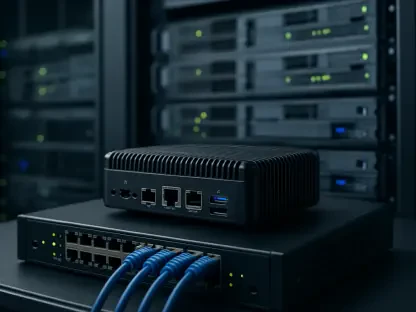The landscape of network management is experiencing a transformative shift with Nokia’s latest evolution—the MantaRay SMO at the forefront. As the telecommunications sector grapples with increasing demand for open and vendor-agnostic solutions, Nokia’s strategic pivot into the non-real time Radio Intelligent Controller (non-RT RIC) domain signals a substantive move towards embracing the Open RAN framework. This evolution mirrors industry trends, evident in Nokia aligning with Ericsson’s earlier introduction of the Intelligent Automation Platform. The dynamic shifts invite questions about how Nokia’s MantaRay SMO is poised to influence Open RAN management and whether it can truly set a precedent in a world driven by modular ecosystems and cross-vendor compatibility.
The MantaRay SMO framework effectively balances technological continuity and innovation, assuring operators of stability while introducing groundbreaking manageability features. Building upon the foundation established by Nokia’s previous near real-time RIC (nrt-RIC), the MantaRay SMO enhances its offerings, presenting a comprehensive, non-RT RIC ecosystem equipped with 30 Nokia rApps. These applications, strategically repurposed from its Self-Organizing Network (SON) functionalities, augment the SMO’s capabilities with robust AI-driven solutions. By distinguishing itself through adherence to TM Forum’s Level 4 automation standards, Nokia aspires for MantaRay SMO to redefine performance metrics and introduce advanced efficiency benchmarks within the networking landscape.
Strategic Alignment and Industry Insights
Nokia’s transition into non-real time Radio Intelligent Controller capabilities highlights its broader commitment to evolving network paradigms that prioritize openness and collaboration. By launching MantaRay SMO, Nokia enters a competitive yet promising territory dominated by the push for interoperability, a space Ericsson and its Intelligent Automation Platform have explored since late 2021. Despite its late arrival, Nokia presents MantaRay SMO as an evolution of its offerings, seeking to merge legacy experiences with innovative applications. A pivotal focus for Nokia is maintaining a system responsive to market trends and customer demands, juxtaposing itself against Ericsson’s established model, already integrated with its Intelligent Automation Platform, especially in partnerships like that with AT&T.
The Open RAN framework has witnessed significant shifts with both Nokia and Ericsson pursuing vendor-agnostic systems, representing an industry leaning towards cooperative ecosystems. The flexibility and openness inherent in such fragmented frameworks allow operators to incorporate diverse app environments, fostering innovation through seamless third-party integrations. Nokia’s emphasis on sustaining an open app ecosystem aligns with this vision, inviting collaborative participation across different technology partners. Supported by advanced orchestration and dynamic resource management capabilities, MantaRay SMO strives to position itself as a cornerstone for adaptive and efficient RAN management, aligned with contemporary Open RAN specifications and poised for future developments.
MantaRay SMO: Architectural Components and Capabilities
Delving into the architectural nuances of MantaRay SMO reveals a nuanced synergy of components designed for an interconnected and intelligent network management experience. Central to this ecosystem are the orchestration and management capabilities encapsulated within three primary frameworks: MantaRay NM for robust network management, MantaRay SON featuring rApps tailored for comprehensive automation, and MantaRay AutoPilot, which acts as a dynamic orchestration solution. This trifecta empowers operators to efficiently navigate network complexities, ensuring adaptable service delivery aligned with precise network slice service priorities. The deployment potential within a slice-aware environment augments MantaRay SMO’s utility by enabling service providers to manage heterogeneous demands effectively.
Nokia’s Digital Operations Center further supplements MantaRay SMO’s functionality by integrating the RAN Slice Controller for advanced orchestration and resource management. This integration provides operators with real-time control over network parameters, ensuring service levels are not only met but optimized for various slice requirements. Beyond merely fulfilling operational metrics, this capability embodies Nokia’s ambition to redefine network management paradigms, offering a competitive edge in the expanding telecommunications solutions landscape. The robust architectural design enhances Nokia’s ability to meet O-RAN requirements faithfully, demonstrating its commitment to facilitating a multi-supplier, interconnected ecosystem where vendor interoperability thrives.
Future Trajectories and Evolving Market Dynamics
Nokia is spearheading a pivotal shift in network management with its latest innovation, the MantaRay SMO. This evolution signifies a major step in the telecommunications industry’s pursuit of open, vendor-neutral solutions. By venturing into the non-real time Radio Intelligent Controller (non-RT RIC) space, Nokia shows a clear commitment to adopting the Open RAN framework. This move is reflective of broader industry trends and positions Nokia alongside Ericsson, which previously introduced a similar Intelligent Automation Platform. The introduction of MantaRay SMO raises questions about its potential impact on Open RAN management and its capability to establish a new benchmark in a world focused on modular ecosystems and cross-vendor interoperability.
With the MantaRay SMO, Nokia merges stability with innovation by building on their earlier near real-time RIC (nrt-RIC) foundation. It offers an extensive non-RT RIC ecosystem augmented by 30 Nokia rApps, repurposed from its Self-Organizing Network functionalities and enhanced with AI-driven solutions. Adhering to TM Forum’s Level 4 automation standards, Nokia aims to set new performance metrics and efficiency benchmarks in the networking sector.









